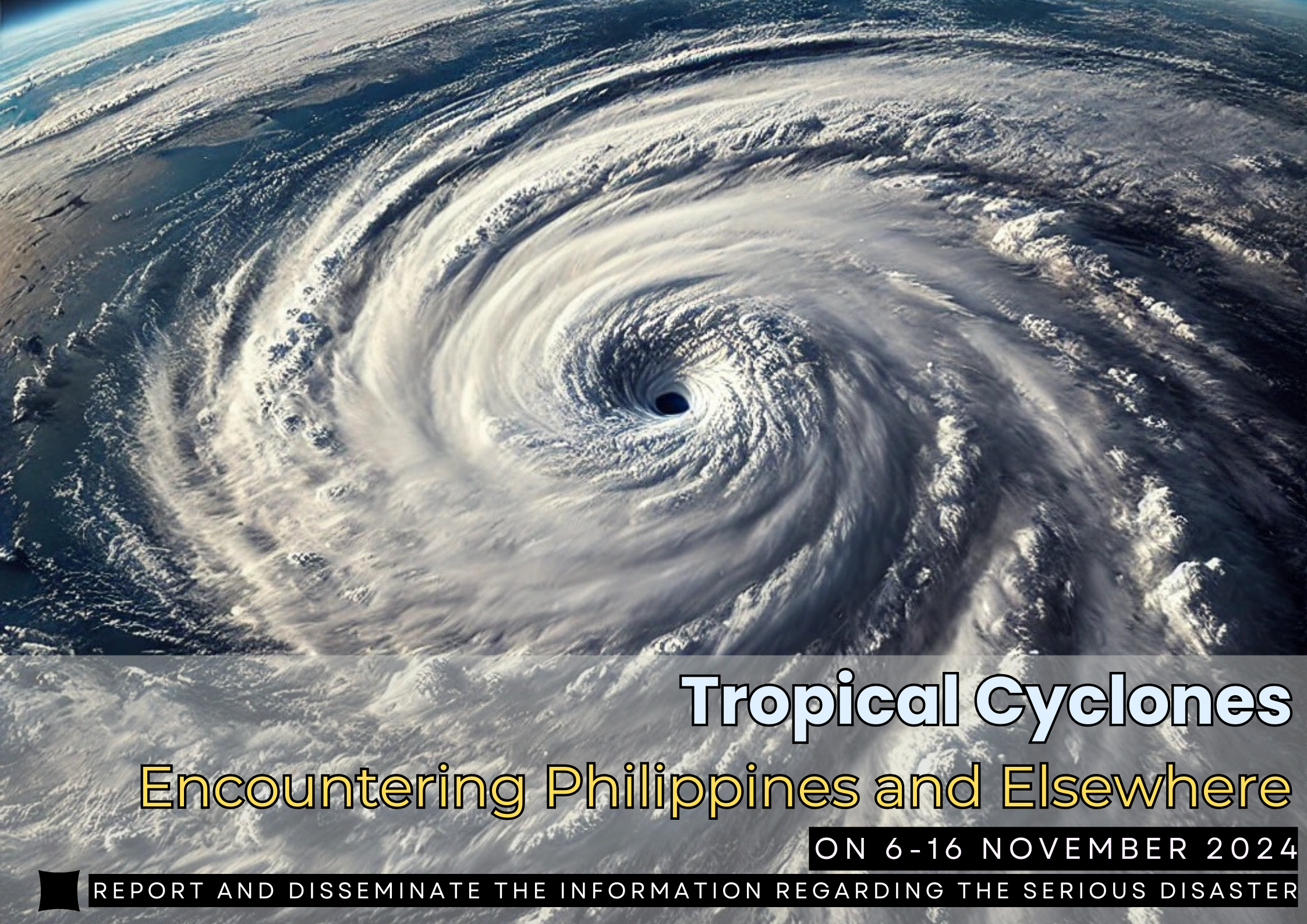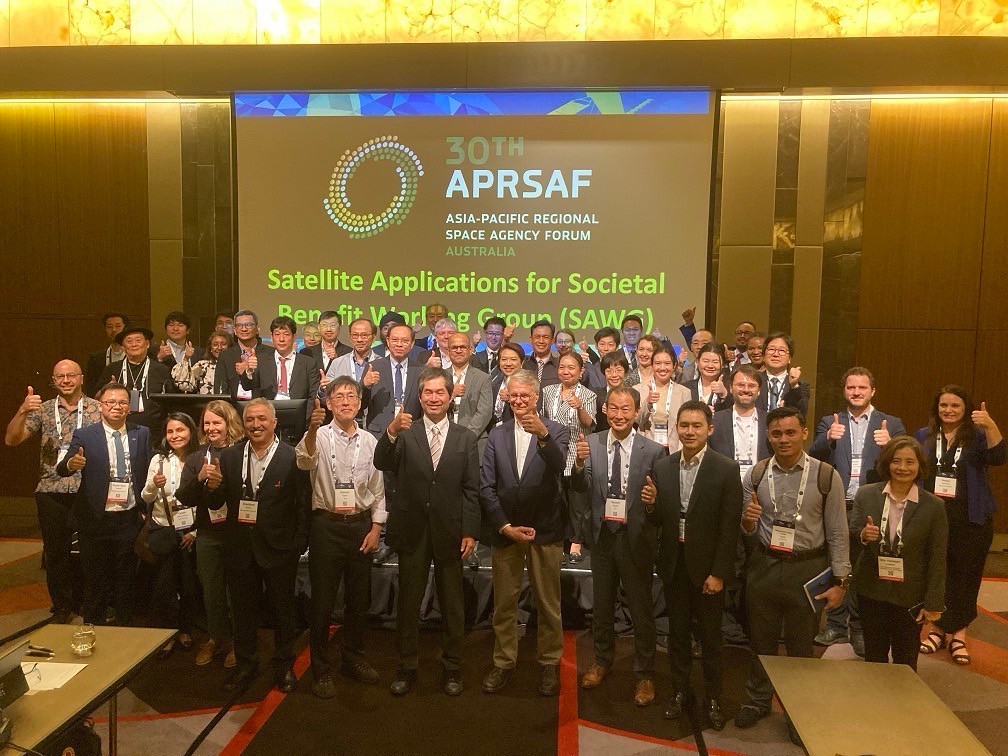

Lewotobi Laki-laki Volcano Eruption, Indonesia
On 3 November 2024
Source:
(1)ASEAN Coordinating Centre for Humanitarian Assistance, National Disaster Risk Reduction and Management Council
(2) Center for Volcanology and Geological Hazard Mitigation (PVMBG) and
(3) Centre for Agricultural Data and Information Systems under the Ministry of Agriculture, The Republic of Indonesia
References:
Mount Lewotobi Laki-laki Erupts on November 3, Triggering Emergency Alert
On Sunday, November 3, 2024, at 22:57 WITA, Mount Lewotobi Laki-Laki, one of Indonesia’s 120 active volcanoes, erupted on the island of Flores in East Nusa Tenggara province, The eruption, lasting 24 minutes (1,450 seconds), was recorded with a massive amplitude of 47.3 mm. According to Indonesia's National Disaster Management Agency, a strong eruption sent ash up to 2,000 meters (6,500 feet), affecting over 10,000 people. Smaller eruptions followed on November 5-6. In response, the Center for Volcanology and Geological Hazard Mitigation (PVMBG) raised the volcano’s alert status to “Awas” (Level IV), indicating a high danger level.
Philippines
Impact on Affected Areas
The eruption of Mount Lewotobi Laki-Laki, which began on November 3, 2024, and continued for several days, affected the sub-districts of Wulanggitang and Ilebura, with a total population of 10,295 people across 10 villages. A 7-kilometer (4.3-mile) danger zone was established, leading to the evacuation of thousands to nearby areas. The eruption caused significant damage to infrastructure, homes, and agricultural areas in the affected regions.
Agricultural Devastation
The eruption caused significant damage to agricultural lands in the sub-districts of Wulanggitang and Ilebura, as follows:
Agricultural lands
Affected Crops:
Impact on the rice product
The eruption is projected to decrease rice production in East Nusa Tenggara Province by 4,154.35 tons, or approximately 0.59% of the expected rice output for 2024, which is projected to reach 706,906.05 tons. This reduction could have long-term effects on food security and local economies, particularly for communities dependent on agriculture for their livelihoods.
Government Response and Countermeasures
o Evacuation Centers: Three evacuation centers have been established in Konga Village, Lewolaga Village, andTietehena Village to provide temporary shelter for displaced residents. Thousands of people from the affected sub-districts of Wulanggitang and Ilebura have been relocated to these shelters.
o Relief Supplies: Mobile kitchens have been set up, and mineral water, folding mattresses, blankets, and first aid kits are being distributed to those in need. Emergency response teams have been deployed to ensure the safety and well-being of the residents.
o Residents and visitors around Mount Lewotobi Laki-Laki are advised not to engage in any activities within a 7 km radius of the eruption center to avoid exposure to volcanic hazards.
o Authorities have warned of the potential for lahar floods (volcanic mudflows) in rivers originating from the peak, especially during heavy rainfall. Areas at risk include Dulipali, Padang Pasir, and Nobo.
o The Center for Volcanology and Geological Hazard Mitigation (PVMBG) raised the alert level of Mount Lewotobi Laki-Laki to “Awas” (Level IV), the highest danger level, to warn local authorities and residents of the ongoing volcanic threat.
o Continuous monitoring of volcanic activity is being conducted to assess any further risks, and residents are advised to remain vigilant.

In late November and early December 2024, Malaysia and southern Thailand experienced severe flooding and heavy rainfall, which caused widespread damage, including landslides and agricultural devastation. In Malaysia, 25 districts across seven states were severely impacted, with households evacuated and extensive flooding reported. Similarly, southern Thailand experienced heavy rains and flash flooding, particularly in provinces affecting over 136,000 households. The floods severely damaged agricultural sectors, with significant losses in paddy rice and other crops, amounting to millions of dollars in damages in both countries. In response, both nations initiated emergency measures, including providing aid and conducting damage assessments. Malaysia focused on intensive assistance to affected households, while Thailand mobilized a range of relief efforts, including specialized equipment and emergency vehicles, to support flood-stricken regions. The agricultural losses in both countries highlight the critical need for improved disaster preparedness and more resilient agricultural systems.

The tropical cyclones that impacted the Philippines in November 2024, including Yinxing, Oraji, Usagi, and Man-Yi, have caused widespread devastation across several provinces, resulting in heavy rainfall, severe winds, flooding, and significant agricultural damage. These storms have left communities grappling with extensive losses, including damaged crops, disrupted livelihoods, and displacement. Despite the severe impacts, the government of the Philippines, along with international aid from neighboring countries and global partners, has mobilized resources for relief and recovery. The ongoing efforts to assist those affected highlight the resilience of the Filipino people and the importance of continued preparedness in the face of natural disasters.

On 26-27 November 2024, Dr. Sumanya Ngandee, the AFSIS Manager, participated in the 30th session of the Asia-Pacific Regional Space Agency Forum (APRSAF-30), held in Perth, Australia. This event was co-organized by the Australian Space Agency (ASA), the Ministry of Education, Culture, Sports, Science and Technology (MEXT) of Japan, and the Japan Aerospace Exploration Agency (JAXA). The forum's focus was to bring together stakeholders from various space agencies in the Asia-Pacific region to address pressing regional issues through space-based solutions.

On November 12, 2024, Dr. Sumanya Nagdee, AFSIS Manager, participated in the Completion and Handover Ceremony for the project "Establishing Real-Time ASEAN Food Security Information System (AFSIS) and Development of Human Resources 3rd Phase – Pilot Project on Strategic Crop Forecasting System for Food Security in Indonesia." The event, which took place in Jakarta, Indonesia, was supported by the Government of the Republic of Korea and This meeting was chaired by Ms. Intan Rahayu, Director of the Center of Agricultural Data and System Information (CADIS) under Indonesia's Ministry of Agriculture, and Mr. An Jaerok, Vice President of EPIS from South Korea, along with representatives from various sectors.
Visitor Info 320218 | Today 431 | Yesterday 445 | This week 3434 | This Month 7490 | Total 320218
Copyright 2017. ASEAN Plus Three
Food Security Information System Rights Reserved.